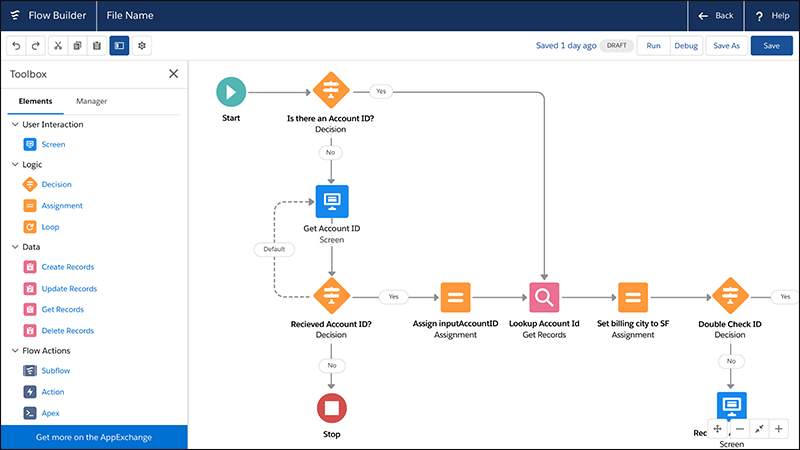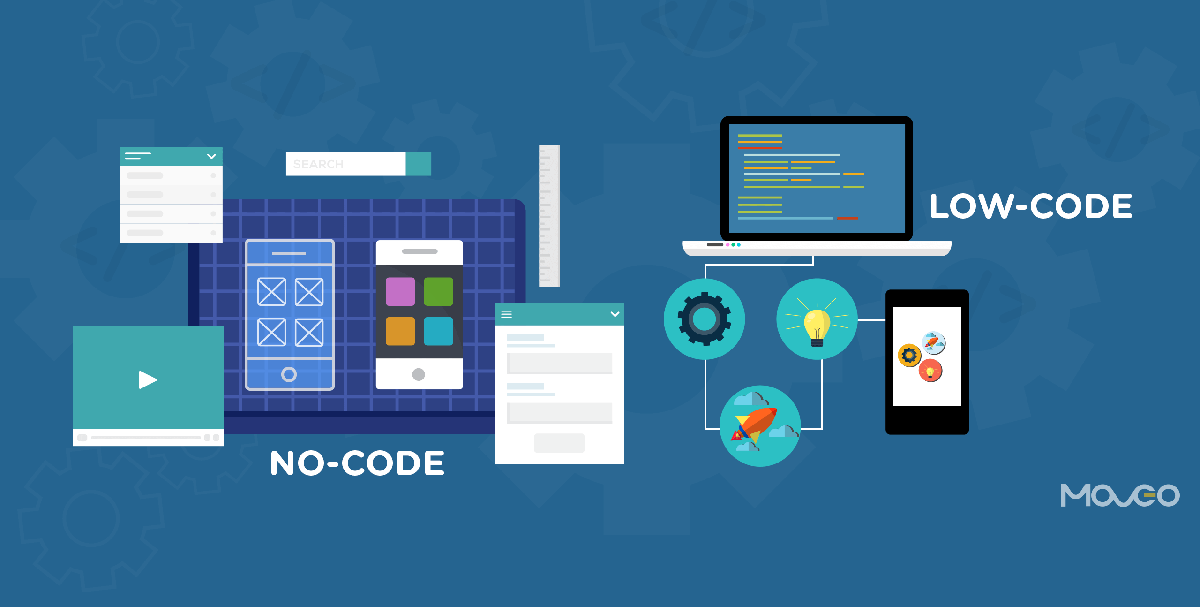Handy Advice For Deciding On Low-Code Platform Sites
Wiki Article
Advantages Of Low Code Application Development In Terms Of Integration Capabilities
Low-code application development offers significant advantages in terms of integration capabilities. They are essential for creating applications that can seamlessly integrate with diverse platforms and services. Here are some of the key advantages: Prebuilt Connectors and APIs
Wide Range of Connectors Low-code platforms usually come with a vast library of connectors that are pre-built for the most popular enterprise systems (e.g. ERP, CRM and cloud services such as databases,). It makes it easier to integrate these systems.
API Integration: Many low-code platforms provide out-of-the-box API integration features, allowing developers to connect to other service and data sources easily.
Easy to use:
Drag-and-Drop Integration integration tasks can usually be completed using drag-and-drop interfaces, making it possible for both developers and non-developers to design complicated integrations without writing a lot of code.
Visual Workflow builders Visual Workflow Builders: These tools can be used for designing workflows, data flows, and integrations. They aid in understanding and setting up workflows more intuitively.
Standardized Integration Methods:
SOAP and Restful Services: Using standard web service protocols like SOAP and REST makes it simple to integrate with other systems and applications.
OData Other Standards: The support for standards such as OData facilitates the access and manipulation data across applications and platforms.
Real-Time Data Synchronization:
Real-Time Integrations: Low-code platforms can handle real-time data sync between applications and systems. This ensures that data is always up-to-date and consistent throughout the organization.
Event-Driven Architectures: Certain platforms offer event-driven architectures that allow applications to respond in real-time whenever events occur, which is vital for applications that are dynamic.
Legacy System Integration:
Low-code platforms are frequently employed to integrate systems from the past. This lets organizations upgrade IT infrastructures without having to completely overhaul the existing systems.
Data Migration Tools Built-in data migration tools allow you to transfer data from older systems to lower-code applications.
Integration of Third Party Services:
Cloud Services: Seamless Integration with Cloud Services such as AWS Azure Google Cloud and Google Cloud makes it easy to deploy applications.
Business Applications Low-code platforms allow you to connect with a variety of business apps like Salesforce, SAP or Microsoft Dynamics. They allow a cohesive workflow for different tasks in business.
Simplified Data Processing:
Unified Data Models - Some low code platforms offer unified models of data that make data management easier and integration between different systems.
Data Connectors Pre-configured data connectors enable users to access and manipulate data from various sources.
Security and Compliance
Secure Integrations - Low-code platforms have been designed to ensure that all integrations conform to security protocols and standards. This ensures the security of information both during its travel and when it is being stored.
Compliance Features: These platform typically have features that assure that integrations are in compliance with regulations, for example GDPR and HIPAA. This gives peace ofmind for businesses handling sensitive data.
Extensibility:
Low-code platforms permit the use of customized scripts and programs to accommodate more complex integration requirements. This flexibility is provided without compromising user-friendliness.
Plug-in Ecosystem A collection of plugins and extensions that can increase the capabilities of integration and allow users to add new functionalities as needed.
Overall, the low-code platform's capabilities to integrate makes it an effective tool to create interconnected applications that are efficient and scalable. They simplify the process of connecting disparate systems, enhance data flow, and enable enterprises to use existing technologies while adopting new ones, thereby ensuring an integrated and cohesive IT environment. Have a look at the top rated Low-code Platform for application development for more examples including develop mobile application, app platforms, app modernization, push alerts, developing mobile apps, build a docker container, develop cross platform mobile app, develop web application, jdbc server, azure sql server and more.

Flexibility And Scalability Are Two Benefits Of Low Code Application Development
Low-code development of applications offers a variety of advantages when it comes to the ability to scale and flexibility. These are essential for creating applications that grow with business needs and be able to adapt to the changing demands. Here are the main benefits: Rapid Scaling:
Cloud-based deployment: Many low-code platforms are cloud-based that allow applications to scale effortlessly with the cloud infrastructure. This allows companies to handle an increase in demand without worrying about managing servers.
Auto-Scaling Functions: Auto-scaling features are able to adjust resources automatically in response to demands. They guarantee that performance is constant at peak times.
Flexible Architecture:
Low-code platforms encourage modular designs where components can independently developed, assessed and adapted. Modularity increases flexibility and allows for easier upgrades or expansions of certain parts without impacting the whole system.
Microservices Architecture: Microservices architecture supports the creation of applications by creating a loosely coupled set of services. This increases both scalability & flexibility.
Custom-designed solutions:
Flexibility : Low-code platforms allow developers to expand functions beyond what they are able to provide. This enables unique business requirements to be fulfilled without limitations.
Third-Party Integrations: The incorporation of third-party APIs, services or other types of services permits businesses to increase the capabilities of their application by adding additional functionalities.
Agile Development and its deployment:
Continuous Delivery and Deployment Low-code platforms can be used to implement agile methods which allow continuous integration as well as continuous delivery (CI/CD). This allows rapid release of updates and features. The applications can evolve rapidly as a result of market trends and feedback from users.
Iterative development: Low-code development is iterative and therefore applications can be scaled and enhanced incrementally. This decreases the risk of large-scale changes while allowing the growth to be controlled.
Resource Optimization
Efficient Resource Management: Low-code platforms help optimize the usage of resources through providing tools for monitoring and managing the performance of applications. This makes sure that resources are used efficiently and are easily scaled to meet the actual demands.
Load balancing: The application is able to handle large volumes of traffic efficiently and with a high degree of consistency because of the integrated load-balancing features.
Global Reach
Multi-Region Integration: Low code platforms can be implemented across many geographical regions. This enables companies to offer users low latency internet access across the globe. This is essential, especially for applications that serve global users.
Localization: Support for localization is included, which allows applications to be adjusted for different languages or regional demands. This enhances flexibility for diverse markets.
Maintenance and Updates:
Maintenance is made easier: The visual nature and modularity of low-code applications makes maintenance easier which allows quick fixes and updates to be made without long downtime.
Version Control Systems for Version Control assist in managing rollbacks and changes making sure that updates are deployed in a safe manner and older versions are restored when needed.
Cost Efficiency:
Low Development Costs. By reducing coding requirements, low-code platform platforms reduce the cost of development and allow applications to scale up without increasing the development efforts.
Pay-as-you-go models Many low-code platforms provide flexible pricing for their services, including the pay-as-you go model, which aligns costs to actual usage and growth. This gives the flexibility to budget.
Overall the scalability and flexibility benefits of low-code development allow businesses to create robust, flexible, and scalable applications efficiently. These platforms allow for quick changes to the demands of changing times and efficient use of resources and continual improvement, making sure that applications can develop and grow in line with business needs. Follow the best from this source about Enterprise application development with Low-code Platform for site tips including ms azure sql, ms azure sql, developing mobile apps, low code development platforms, application modernization software, build a docker container, stored sql procedures, push notifications android, develop cross platform mobile app, cross platform app development and more.

Support From Vendors And Community Are Two Of The Advantages Of Low Code Application Development.
Low-code platforms for application development offer major advantages in terms vendor support and community. Both are crucial for ensuring the success of implementation, continuous maintenance and constant improvement of applications. Here are a few of the major benefits: Support from vendors
Comprehensive Technical Support:
Support Teams Dedicated to You: A lot of low-code platforms have access to dedicated support teams who can assist in technical problems, troubleshooting, and provide guidance to ensure that any problems are resolved promptly.
Some vendors provide support 24 hours a day. This is especially beneficial to global businesses with various time zones.
Training and Onboarding
Vendors typically offer structured programs for users including tutorials or webinars. They may also provide certification courses.
A lot of vendors offer personalized onboarding to help customers use the platform efficiently and adapt it to their needs.
Regular Updates, Enhancements and Enhancements:
Continuous Improvement Platform vendors typically regularly release updates that contain new features, improvements to performance as well as security patches. This ensures that the platform remains up-to date and secure.
Feedback Integration: Vendors frequently include feedback from users into their development cycles, ensuring that the platform evolves to meet the changing demands of its customers.
Comprehensive Documentation:
Documentation: Comprehensive documentation is available for most products. It covers everything from the basics to the most advanced customisation. It helps users locate solutions by themselves.
API References Comprehensive API documentation lets developers create custom applications and integrate low-code platforms into other platforms.
Consultation and Professional Services:
Expert Consulting: Vendors often provide consulting services to help in the process of strategic planning, architecture design, and complex implementations to ensure that users are able to use the platform to its maximum potential.
Custom Development: Some vendors provide services that permit the development of specific features, or incorporate the features, but they aren't available in the standard version.
Community Support for the Community
Active User Community:
Discussion boards and forums A number of low-code platforms have vibrant online communities for users to exchange ideas, ask questions and collaborate.
User Groups and Meetings Local and virtual meetings and groups of users offer opportunities to learn, network, and share experiences with others.
Collaboration and knowledge sharing:
Community-Contributed Resources: Users often share templates, modules, and extensions that they have developed, which can be reused or adapted by others, accelerating development and innovation.
Crowdsourced problem solving: The collective experience and knowledge of the community is a valuable resource when troubleshooting problems and generating inventive solutions.
Learning and Development
Community-led training: Many groups host workshops, training sessions and webinars. They are usually run by knowledgeable users who share practical knowledge and advanced techniques.
Online Tutorials and Courses: Community members frequently develop and publish online courses, tutorials and how-to guides, enhancing the learning resources accessible to all users.
Feedback and Influence
Community Forums are typically an opportunity for vendors to get feedback from the community. The feedback can be used to develop enhancements or new features.
Beta Testing Programs. Active community members can participate in beta-testing programs. They will be given early access to the latest features of the platform and have the opportunity to influence the future of the platform.
Recognition and Support
A lot of vendors have communities recognition programs for example MVP programs (Most Valuable Professional), to recognize the contribution of those who are active in their communities.
Peer Support: Members of the community typically provide peer support by sharing their knowledge and providing guidance to less experienced users creating a more collaborative and a supportive atmosphere.
Overall, the combination a robust vendor's support and an active, vibrant community provide a comprehensive support system for low-code development. Users will be able gain access to the experts, resources and collaboration opportunities that they need to successfully build and deploy, manage and improve their applications.
